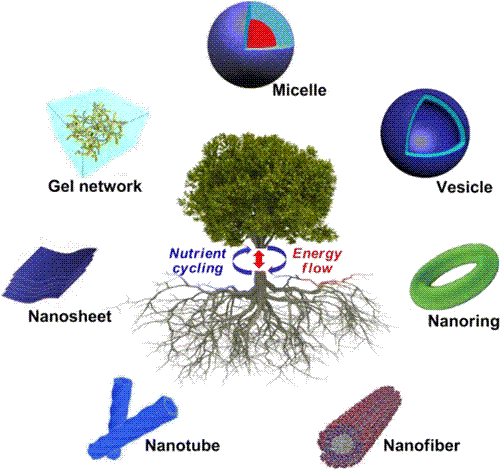Supramolecular Dendritic Polymers: From Synthesis to Applications.
作者:Dong, R. J.; Zhou, Y. F.; Zhu, X. Y.*
关键字:Supramolecular Dendritic Polymers
论文来源:期刊
具体来源:Acc. Chem. Res. 2014, 47,2006?2016. http://pubs.acs.org/doi/pdf/10.1021/ar500057e
发表时间:2014年

Supramolecular dendritic polymers (SDPs), which perfectly combine the advantages of dendritic polymers with those of supramolecular polymers, are a novel class of non-covalently bonded, highly branched macromolecules with three-dimensional globular topology. Because of their dynamic/reversible nature, unique topological structure, and exceptional physical/chemical properties (e.g., low viscosity, high solubility, and a large number of functional terminal groups), SDPs have attracted increasing attention in recent years in both academic and industrial ?elds. In particular, the reversibility of non-covalent interactions endows SDPs with the ability to undergo dynamic switching of structure, morphology, and function in response to various external stimuli, such as pH, temperature, light, stress, and redox agents, which further provides a ?exible and robust platform for designing and developing smart supramolecular polymeric materials and functional supramolecular devices. The existing SDPs can be systematically classi?ed into the following six major types according to their topological features: supramolecular dendrimers, supramolecular dendronized polymers, supramolecular
hyperbranched polymers, supramolecular linear?dendritic block copolymers, supramolecular dendritic?dendritic block copolymers, and supramolecular dendritic multiarm copolymers. These di?erent types of SDPs possess distinct morphologies,
unique architectures, and speci?c functions. Bene?ting from their versatile topological structures as well as stimuli-responsive properties, SDPs have displayed not only unique characteristics or advantages in supramolecular self-assembly behaviors (e.g.,
controllable morphologies, speci?c performance, and facile functionalization) but also great potential to be promising candidates in various ?elds.
In this Account, we summarize the recent progress in the synthesis, functionalization, and self-assembly of SDPs as well as their potential applications in a wide range of ?elds. A variety of synthetic methods using non-covalent interactions have been established to prepare di?erent types of SDPs based on varied mono- or multifunctionalized building blocks (e.g., monomer, dendron, dendrimer, and hyperbranched polymer) with homo- or heterocomplementary units. In addition, SDPs can be further endowed with excellent functionalities by employing di?erent modi?cation approaches involving terminal, focal-point, and backbone modi?cation. Similar to conventional dendritic polymers, SDPs can self-assemble into diverse supramolecular structures such as micelles, vesicles, ?bers, nanorings, tubes, and many hierarchical structures. Finally, we highlight some typical examples of recent applications of SDP-based systems in biomedical ?elds (e.g., controlled drug/gene/protein delivery,
bioimaging, and biomimetic chemistry), nanotechnology (e.g., nanoreactors, catalysis, and molecular imprinting), and functional materials. The current research on SDPs is still at the very early stage, and much more work needs to be done. We anticipate that
future studies of SDPs will focus on developing multifunctional, hierarchical supramolecular materials toward their practical applications by utilization of cooperative non-covalent interactions.